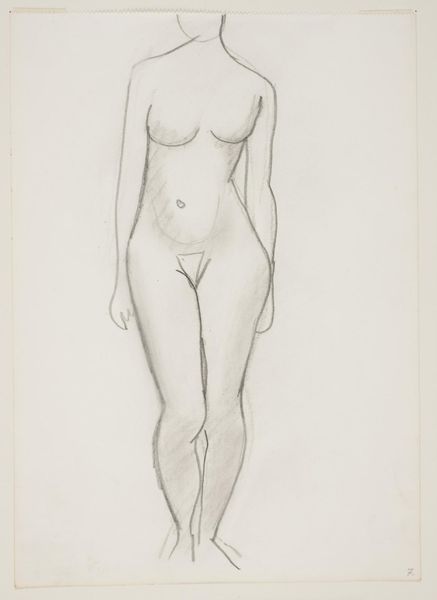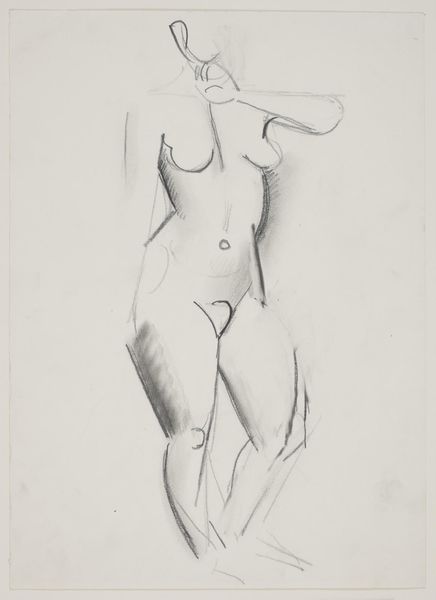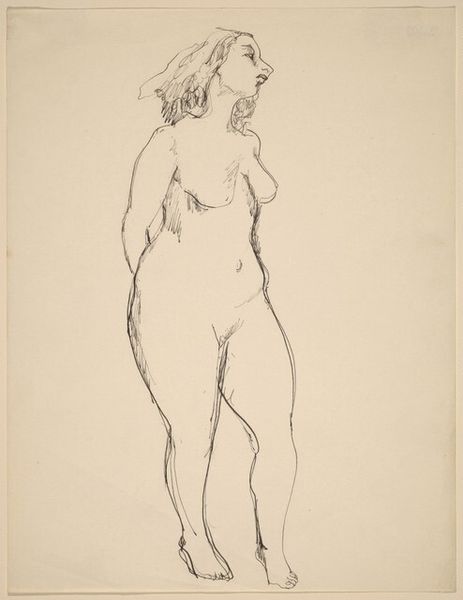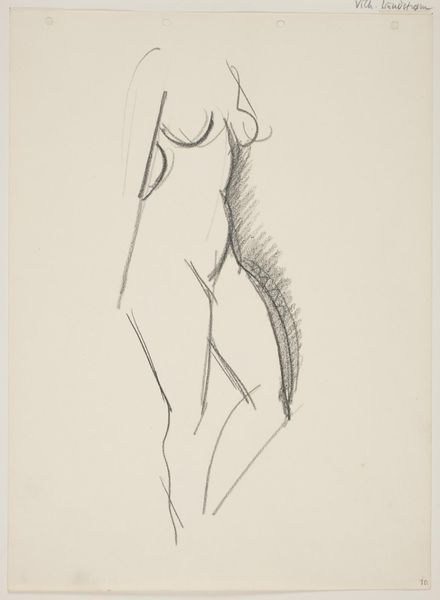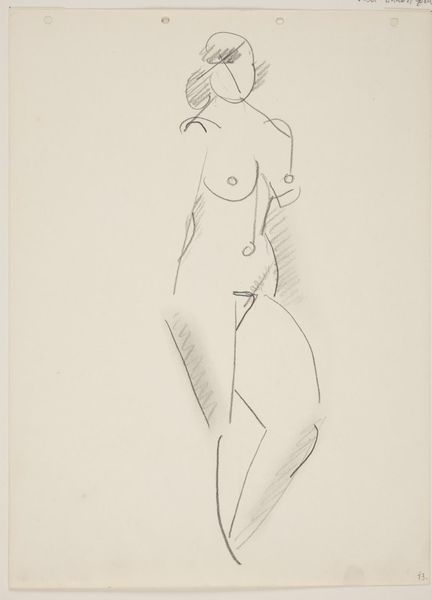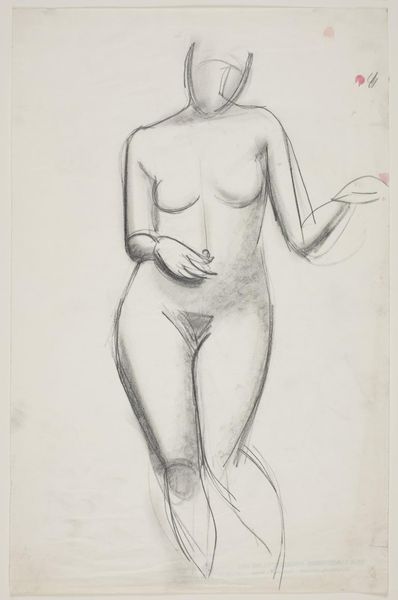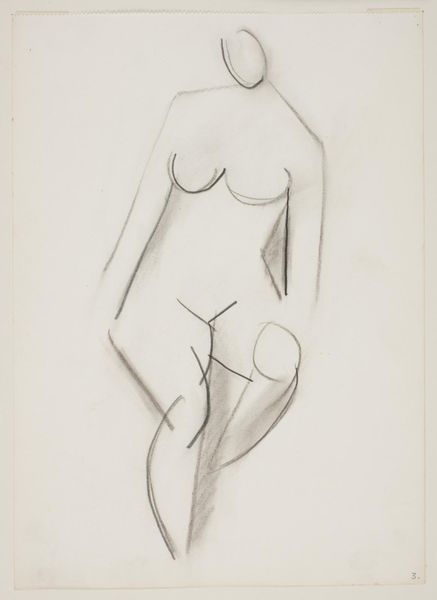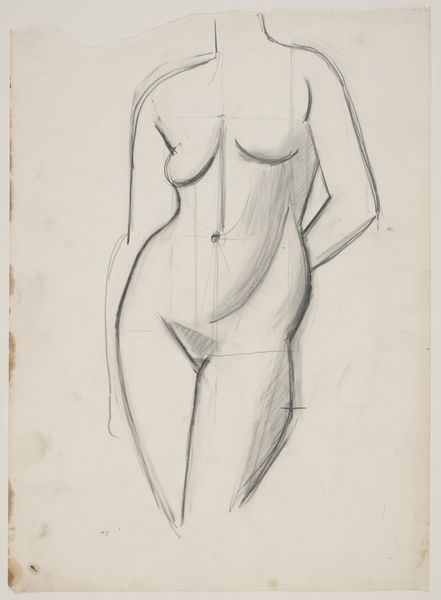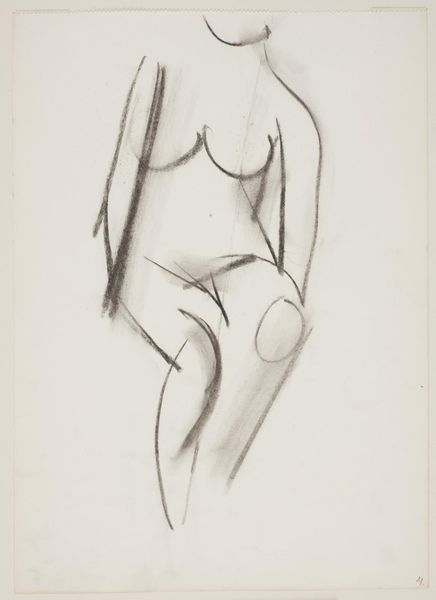
drawing, pencil
#
pencil drawn
#
drawing
#
light pencil work
#
pencil sketch
#
charcoal drawing
#
figuration
#
pencil drawing
#
pencil
#
portrait drawing
#
academic-art
#
nude
Dimensions: 20 1/8 x 13 3/4in. (51.1 x 34.9cm)
Copyright: No Copyright - United States
Curator: I’d like to direct our attention to “Nude Study,” a pencil drawing by Russell Cowles from around the 20th century, housed here at the Minneapolis Institute of Art. What are your initial thoughts? Editor: Well, it's stark. The lack of facial features makes her anonymous, almost like a study of the idealized female form stripped of individual identity. The subtle shading does create a soft, almost vulnerable feel, but I can't help but wonder about the power dynamics at play. Curator: Indeed. The absence of the head does lend a certain universality. We see in this nude not a portrait of a specific woman, but an embodiment of femininity that echoes throughout art history, alluding perhaps to the Venus Pudica figure with its veiled hand gestures suggesting modesty, while subtly emphasizing idealized anatomical structure. Editor: The so-called "Venus Pudica" gesture… To me, that’s precisely where the issue lies. It reinforces a cultural narrative where female bodies are inherently shameful or require concealment, even in artistic representations. What are the politics of this idealized female figure, and whose gaze does it serve? Curator: But the lack of idealization is noticeable as well. The somewhat undefined lines, the asymmetry. In that sense it reflects a truth beyond that paradigm you described. If we follow this to earlier models of Venus as Urania and Pandemos, could this drawing express more secular aspects of beauty and even love itself? Or could we posit that this artist was attempting to render beauty, while lacking some of the technical tools or training for idealization? Editor: Perhaps the perceived lack of perfection you mention, is instead where this work finds its strength, though! Maybe the subtle imperfections offer a glimpse of individuality that defies traditional beauty standards, an understated representation of the female form that feels more realistic, perhaps challenging traditional notions of beauty. Curator: A challenge maybe unintentionally created. But yes, I find it interesting how a seemingly traditional study like this can invite so many contemporary interpretations. Thanks to our cultural background and our current lens we keep looking, analyzing and making different assumptions and evaluations on traditional pieces of art. Editor: Exactly. And hopefully, we can encourage viewers to consider their own perspectives, and the power structures inherent in how we represent the human form even to this day.
Comments
No comments
Be the first to comment and join the conversation on the ultimate creative platform.

